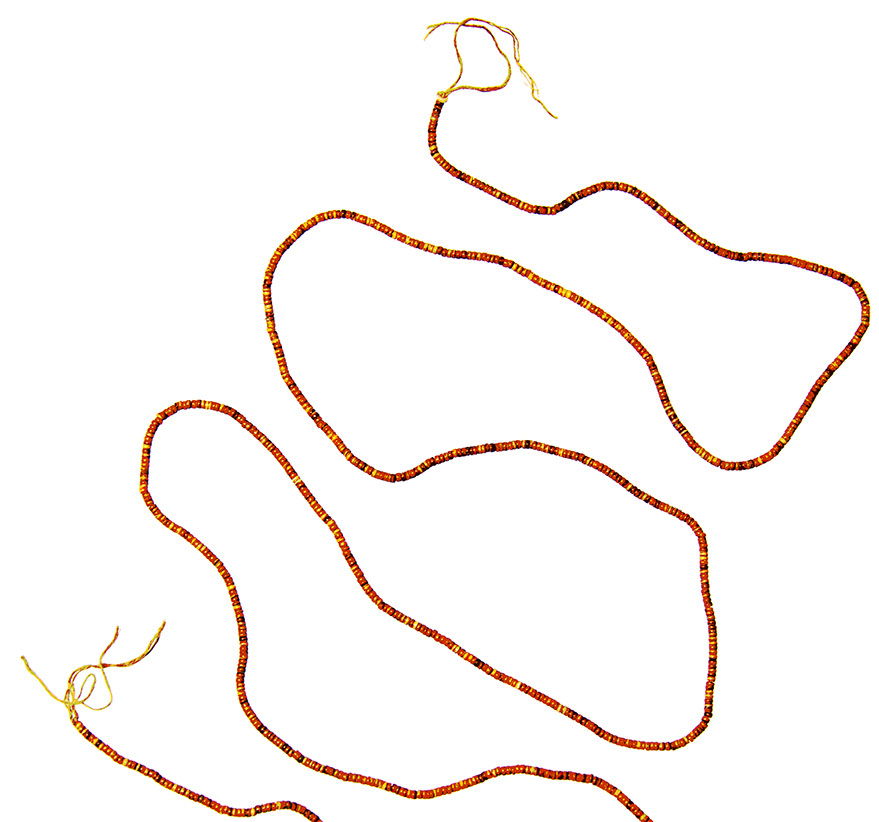
A Red Woman Was Crying
Home
Contents
Myths
Story
Blurbs
Reviews
Covers
Links
Literary
Anthropology
Nagovisi
Audio
Buy
About Don
Contact
A Red Woman Was Crying
Told by Tupuua, 1969
A red woman was crying.
Her name was Koso and she was hungry.
On the ground she thought she saw flying fox bones, but they were leaf spines.
The people with Koso also saw the spines and were crying because they too had nothing to eat.
Some men came and said to Koso, “You had better go to Sekentu’s house. If a pig’s been killed there, you can eat it.”
Koso did not know who Sekentu was. Her father took her to Sekentu’s, and left her there.
Makunai, the demon ancestress of the Eagles, was Sekentu’s mother. Makunai sat Koso down on a bed made of black-palm planks and told her she was now married to Sekentu.
Makunai said, “Stay on the bed until your husband returns from hunting pigs. When you see the bushes shaking, you’ll know he’s coming.”
Sure enough, Koso looked up and saw the bushes shaking. When she saw her husband, he was a snake, not a man.
Koso said, “What kind of husband is this?”
She began to cry.
The snake Sekentu coiled up on a basketry platter under the bed and went to sleep without noticing Koso.
Koso’s tears fell on Sekentu, waking him up.
He said, “What’s up there? Why am I getting wet?”
Makunai said, “That’s your wife.”
Sekentu coiled around Koso. He put his tail in her vagina and ejaculated in her.
Sekentu saw that Koso was very thin. Her bones were showing and he felt sorry for her. He went out to hunt pigs for her. He caught pigs, he killed them, he brought them back, and the two of them smoked them over a fire.
Later, Makunai said, “You two had better go and see Koso’s people.”
When they arrived at Koso’s village, Koso went to the cookhouse and Sekentu slithered to the feasting house.
The people at the cookhouse asked Koso, “Did you come alone?”
“No,” she said, “I came with my husband, who is in the feasting house.”
Her brothers went to the feasting house to see what their brother-in-law looked like.
They didn’t see anybody, so they came back and said, “There’s nobody there.”
Koso said, “Ah, you think he’s a man, do you? Did you look inside the slit gongs?”
So they went back, looked inside one of the slit gongs, and saw a snake.
They said to each other, “What kind of thing has married our sister?”
Sekentu, nestled in the slit gong, said nothing.
They went back to the cookhouse and said to Koso, “When are you two going back to your mother-in-law’s?”
“Tomorrow,” Koso said.
Koso set a date for coming back to her brother’s place.
When Koso and Sekentu were ready to return to Sekentu’s house, Koso’s brothers hid in the bush along the trail to watch them.
They measured the snake as he slithered by.
When Koso and Sekentu returned to Makunai’s house, Sekentu resumed hunting.
Makunai said, “When you are in the forest, gather lengths of the kabe vine and bring them to me.”
Sekentu did, and Makunai took them and joined them and rolled them up.
Sekentu brought back pigs and they smoked them. Every day he went out and brought back more kabe and more pigs.
The day for returning to Koso’s place neared, and finally came.
Sekentu and Koso left.
Koso’s brothers were waiting. They had put tree trunks across the trail.
When Sekentu’s snake body was draped over all the logs, the brothers jumped from the forest and each chopped Sekentu, cutting him into pieces.
In this way he was killed.
Makunai had tied a kabe vine to Sekentu’s tail, and when she pulled back the last piece of his tail she knew he was dead.
She put his tail in the thatching above the food in her cookhouse.
When she cooked food, she said, “Come to life! Spill!” and salt water came down.
When she had enough, she would say “Stay!”
When she gave the food to her grandchildren, they asked, “What have you seasoned this with?”
Makunai answered, “Salt from your father.”
Each day, the children played around the cookhouse, and each day they ate the seasoned food.
Each day they asked the same question and each day she gave them the same answer.
One day, a child hid in the cookhouse. When Makunai said, “Come to life! Spill!” he ran and told his brothers and sisters, “Our grandmother has something that she talks to, and it makes salt.”
Another day Makunai went to her garden, and the children stayed at the cookhouse.
They built up the fire and cooked their own food, and when it was ready, they cried out, “Come to life! Spill!”
Sekentu’s tail did as they commanded, and the pot was soon filled up. The children didn’t know how to stop it.
They went and got coconut shells, and filled them up too.
Sekentu’s tail kept spilling out salt water, and flooded the forest and everything all around.
Everything in the bush and even the villages were floating in Sekentu’s salt water.
At her garden, Makunai saw what was happening and said, “My grandchildren have done this.”
She ran and tried to warn people, “Look out! Run away!” but it was too late.
Sekentu’s salt water killed Koso’s brothers, but some of the people who ran away didn’t die.
All their languages became different, and this island Bougainville was the only place left in the middle of the sea, the sea that Sekentu’s tail made.